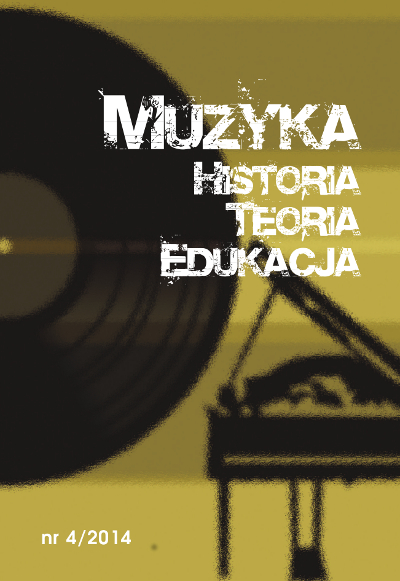Organizacja wysokości dźwięków w utworach Witolda Lutosławskiego. Problemy związane z analizą zjawiska
DOI:
https://doi.org/10.34767/MHTE.2014.04.07Abstrakt
Lutosławski has said many times that he considers the organization of the sound pitch as the most important matter. He kept on working on creating his own means in this field, however, he avoided giving any details with regards to this topic. Since the half of the 50-ties, he created 12-sound systems using appropriately selected intervals in order to achieve the intended tone. These systems proved to be very useful for the technique of the controlled aleatorism worked out by the composer.
The author of the article presents his own method of classifying the 12-sounds depending on the presence of so called fractional structures in them and provides the examples of analysis of many fragments of Lustosławski music with the use of tables constructed by him. These tables are the main part of his article. Bohdan Riemer, Spatial systems of mirror structures in a 12-sound temperament tune, Kazimierz Wielki University in Bydgoszcz 2012.
The author also focuses on the correlation of the sound pitch with other elements of a composition and ponders on the direction of evolution of these phenomena in the music of Lutosławski.
Bibliografia
Gwizdalanka Danuta, Meyer Krzysztof, Lutosławski – droga do mistrzostwa, PWM, Kraków 2004.
Lutosławski Witold, O rytmice i organizacji wysokości dźwięków w technice komponowania z zastosowaniem ograniczonego działania, [w:] „Spotkania muzyczne w Baranowie” 1, Muzyka w kontekście kultury, PWM 1978.
Rae Charles Bodman, Muzyka Lutosławskiego, przeł. Stanisław Krupowicz, PWN, Warszawa 1996.
Riemer Bohdan, Układy przestrzenne struktur zwierciadlanych w dwunastodźwiękowym stroju temperowanym, Wydawnictwo UKW, Bydgoszcz 2012.

